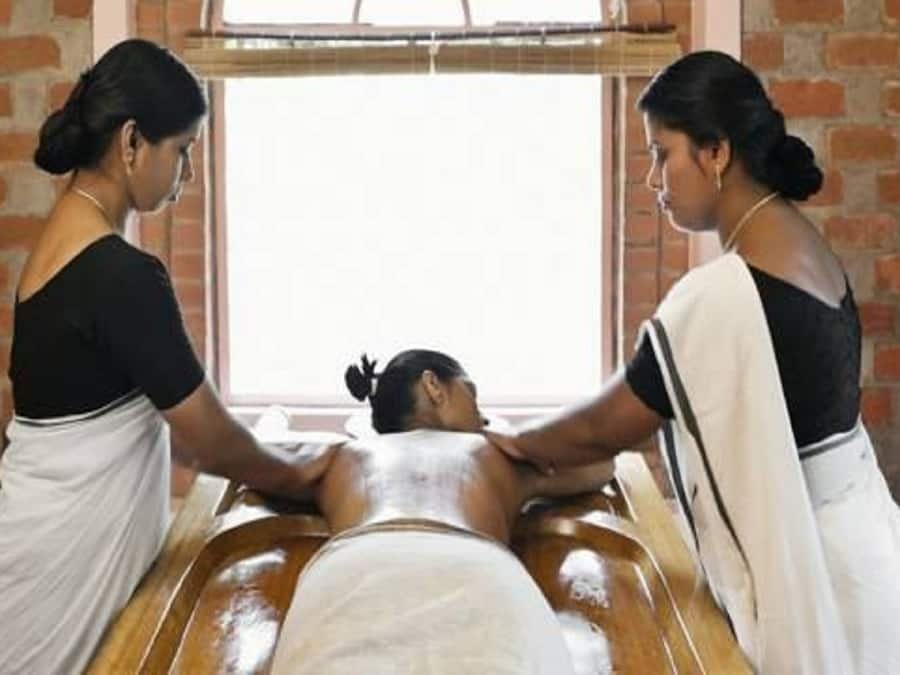![]()

The success of Panchakarma depends on individual needs and the guidance of a qualified Ayurvedic practitioner for the most suitable treatment plan.
The arrival of the monsoon season often heralds a cascade of physical discomforts. The damp, chilly air can exacerbate health conditions, leaving many sluggish and achy. At the heart of these woes lies an imbalance of Vata, one of Ayurveda’s fundamental energies. When Vata is aggravated, its dryness, cold, and roughness manifest in various ways, from joint pain to digestive disturbances. Moreover, the humid environment provides an ideal breeding ground for microorganisms, increasing the body’s toxic burden.
Panchakarma
An Ayurvedic cornerstone for deep-rooted detoxification and rejuvenation offers a comprehensive approach to combat these monsoon maladies. This time-honoured therapy is a multi-step process involving preparatory, purification, and post-purification phases. The initial stages focus on preparing the body for deep cleansing through oil massages (abhyanga) and sweat-inducing therapies (sudation). These treatments help to loosen and mobilize toxins from the tissues, preparing the body for the more intensive purification procedures.
The Core Purification Phase
The “Panchakarma” phase involves a series of targeted therapies. Vamana (therapeutic vomiting), Virechan (therapeutic purgation), Basti (medicated enemas), Nasya (nasal administration of medicated oil), and Raktamokshana (blood purification) are among the primary procedures imbalances and health conditions. For instance, Vamana is often indicated for conditions involving excess Kapha, while Virechan is beneficial for Pitta imbalances. Basti is considered a cornerstone treatment for Vata disorders, as it helps to nourish and balance the large intestine.
- Nasya, the administration of medicated oils through the nasal passages, is particularly beneficial during the rainy season as it helps to clear the head, improve respiratory function, and prevent the aggravation of Vata.
- Raktamokshana, or blood purification, is a more specialized procedure that is typically reserved for chronic conditions and should be performed under the guidance of an experienced Ayurvedic practitioner.
- The post-purification phase, or Paschat Karma, is equally important as it involves therapies to rebalance the doshas, nourish the tissues, and prevent the re-accumulation of toxins. This phase often includes a combination of diet, lifestyle modifications, and herbal remedies.
The Benefits Of Panchakarma Extend Far Beyond Detoxification
It is particularly effective in addressing the joint pain, muscle aches, and stiffness commonly experienced during the rainy season. By pacifying Vata, Panchakarma can also alleviate digestive disturbances, improve respiratory function, and promote mental clarity. It is a holistic approach that addresses the body and mind simultaneously.
However, the success of Panchakarma depends on individual needs and the guidance of a qualified Ayurvedic practitioner for the most suitable treatment plan.





